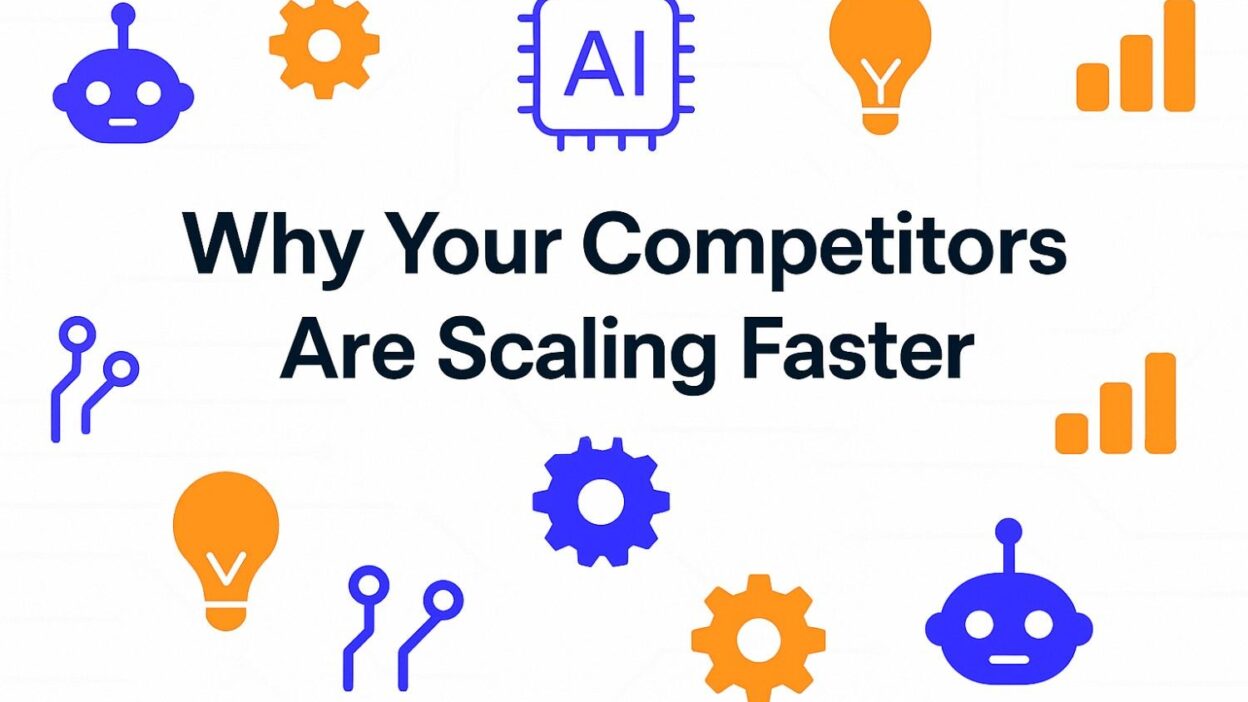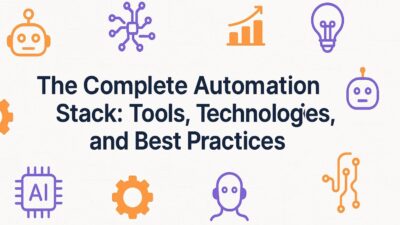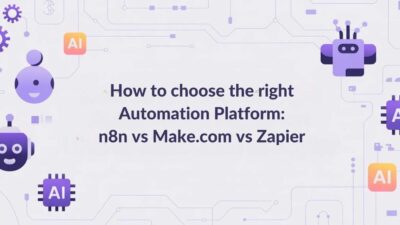Have you ever wondered how some businesses seem to effortlessly outpace their competition? While you’re still manually processing orders, they’re launching new product lines. While you’re scheduling meetings one by one, they’re closing deals at unprecedented rates. The uncomfortable truth? Your competitors have discovered the secret weapon of AI automation.
Table of Contents
The Hidden Acceleration Engine
In today’s hyper-competitive marketplace, the businesses pulling ahead aren’t necessarily those with bigger budgets or larger teams. They’re the ones who’ve embraced AI automation as their core growth strategy. These companies have fundamentally transformed how they operate, turning time-consuming manual processes into lightning-fast automated workflows.
The Numbers Don’t Lie
Companies implementing AI automation are experiencing:
- 40% faster time-to-market for new products and services
- 60% reduction in operational costs through streamlined processes
- 3x improvement in customer response times via automated support systems
- 25% increase in revenue within the first year of implementation
Where Your Competitors Are Gaining Ground
Customer Acquisition at Scale
While you’re manually qualifying leads, your competitors are using AI to:
- Automatically score and prioritize prospects based on behavior patterns
- Personalize outreach messages for thousands of potential customers simultaneously
- Schedule and conduct initial discovery calls using AI-powered chatbots
- Nurture leads through sophisticated email sequences that adapt based on engagement
Operational Excellence Through Intelligence
Smart competitors have automated their core business functions:
Finance & Accounting: AI handles invoice processing, expense reporting, and financial forecasting with 99% accuracy, freeing up teams to focus on strategic financial planning.
Human Resources: From resume screening to employee onboarding, AI ensures the best candidates are identified and integrated faster than ever before.
Supply Chain Management: Predictive analytics optimize inventory levels, anticipate demand fluctuations, and automatically reorder supplies before stockouts occur.
Decision-Making at the Speed of Data
Perhaps most importantly, AI automation enables competitors to make informed decisions rapidly. Real-time data analysis provides insights that would take human analysts weeks to compile, allowing for:
- Instant market opportunity identification
- Dynamic pricing strategies that maximize profits
- Rapid product pivots based on customer feedback patterns
- Proactive problem-solving before issues impact customers
The Compound Effect of Automation
Here’s what makes AI automation particularly powerful: it creates a compound advantage. Each automated process doesn’t just save time—it frees up resources that can be reinvested into growth initiatives. This creates a snowball effect where automated businesses grow exponentially faster than their manual counterparts.
Breaking the Manual Labor Trap
Traditional businesses get trapped in a cycle where growth requires more people, which increases complexity and costs. AI automation breaks this cycle by enabling businesses to scale operations without proportionally increasing headcount. Your competitors aren’t just working smarter—they’re building scalable systems that grow more efficient over time.
The Cost of Waiting
Every day you delay implementing AI automation, the gap between you and your competitors widens. Consider this: if your competitor automates a process that saves 2 hours per day, that’s 730 hours per year—equivalent to adding an extra employee without the associated costs.
More critically, automated businesses can:
- Respond to market changes faster
- Serve more customers with the same resources
- Maintain consistent quality at scale
- Operate efficiently across multiple time zones
Your Path to Competitive Automation
The good news? It’s not too late to catch up. Here’s how to begin your automation journey:
Start with Impact Analysis
Identify your most time-intensive, repetitive processes. Focus on areas where small improvements yield significant results—typically customer service, sales follow-up, and data entry tasks.
Choose the Right AI Tools
Look for automation platforms that integrate seamlessly with your existing systems. The best AI tools require minimal technical expertise and provide immediate value.
Implement Gradually
Begin with one or two processes, measure results, and expand systematically. This approach minimizes disruption while building organizational confidence in automation.
Measure and Optimize
Track key performance indicators before and after automation implementation. Use these metrics to refine processes and identify additional automation opportunities.
The Future Belongs to the Automated
AI automation isn’t a temporary competitive advantage—it’s becoming the baseline requirement for business survival. Companies that fail to automate will find themselves unable to compete on speed, cost, or customer experience.
Your competitors have already started this journey. The question isn’t whether you should implement AI automation, but how quickly you can begin. In a world where speed determines market position, automation isn’t just an advantage—it’s essential infrastructure for sustainable growth.
📧 Email: [email protected]
📞 Phone: 1-347-543-4290
🌐 Website: emasterlabs.com
📍 Address: 1942 Broadway Suite 314 Boulder, CO 80302 USA
Engineer Master Labs – You Think, We Automate, You Profit





